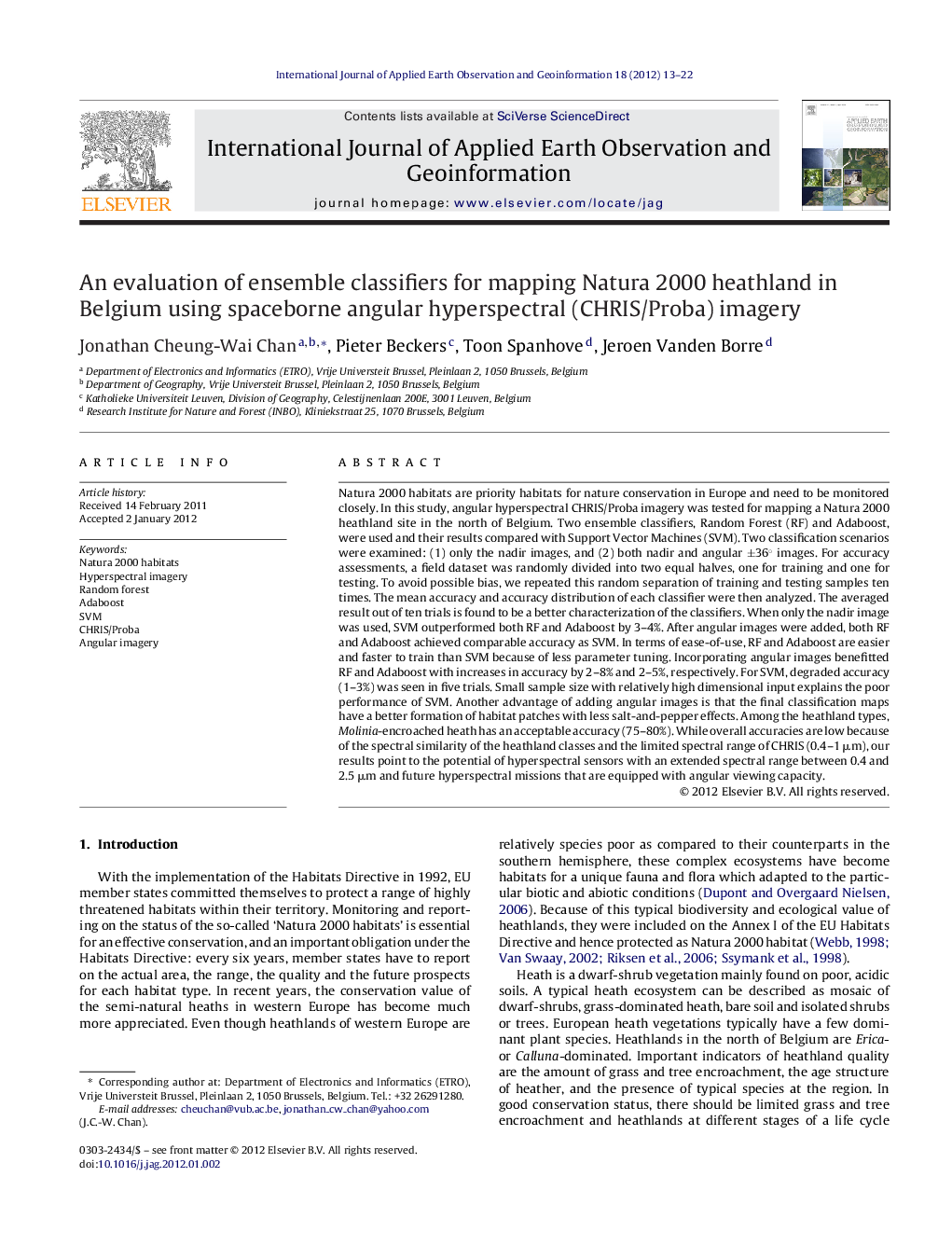| کد مقاله | کد نشریه | سال انتشار | مقاله انگلیسی | نسخه تمام متن |
|---|---|---|---|---|
| 4464907 | 1621842 | 2012 | 10 صفحه PDF | دانلود رایگان |

Natura 2000 habitats are priority habitats for nature conservation in Europe and need to be monitored closely. In this study, angular hyperspectral CHRIS/Proba imagery was tested for mapping a Natura 2000 heathland site in the north of Belgium. Two ensemble classifiers, Random Forest (RF) and Adaboost, were used and their results compared with Support Vector Machines (SVM). Two classification scenarios were examined: (1) only the nadir images, and (2) both nadir and angular ±36° images. For accuracy assessments, a field dataset was randomly divided into two equal halves, one for training and one for testing. To avoid possible bias, we repeated this random separation of training and testing samples ten times. The mean accuracy and accuracy distribution of each classifier were then analyzed. The averaged result out of ten trials is found to be a better characterization of the classifiers. When only the nadir image was used, SVM outperformed both RF and Adaboost by 3–4%. After angular images were added, both RF and Adaboost achieved comparable accuracy as SVM. In terms of ease-of-use, RF and Adaboost are easier and faster to train than SVM because of less parameter tuning. Incorporating angular images benefitted RF and Adaboost with increases in accuracy by 2–8% and 2–5%, respectively. For SVM, degraded accuracy (1–3%) was seen in five trials. Small sample size with relatively high dimensional input explains the poor performance of SVM. Another advantage of adding angular images is that the final classification maps have a better formation of habitat patches with less salt-and-pepper effects. Among the heathland types, Molinia-encroached heath has an acceptable accuracy (75–80%). While overall accuracies are low because of the spectral similarity of the heathland classes and the limited spectral range of CHRIS (0.4–1 μm), our results point to the potential of hyperspectral sensors with an extended spectral range between 0.4 and 2.5 μm and future hyperspectral missions that are equipped with angular viewing capacity.
► Angular hyperspectral CHRIS images are used to map Natura 2000 habitats (heathland).
► Accuracy assessments are based on the average of ten independent trials.
► Random Forest and Adaboost achieve comparable accuracies as SVM.
► Angular images improves heathland classification with better formed habitat patches.
► Small training samples with high dimensional input is a problem with SVM.
Journal: International Journal of Applied Earth Observation and Geoinformation - Volume 18, August 2012, Pages 13–22